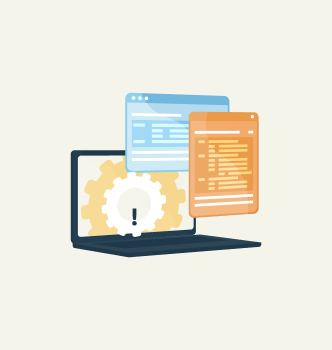Home > Secure, Safe Alternative to Salesforce for Outlook and Lightning Sync
There’s no questioning Salesforce’s capabilities as a productivity tool for sales, marketing and customer service teams. Its powerful features provide teams with powerful interaction tracking, sales reporting and marketing automation. When it comes to tracking sales activities, opportunities, leads and managing customer relationships, few other solutions compare. The bottom line is that many businesses would be significantly disadvantaged without Salesforce’s valuable capabilities.
But while Salesforce sets the bar for customer relationships and sales pipeline management, some of the additional features don’t fare quite as well. Tools such as Salesforce Inbox and Einstein Activity Capture suffer by way of clunky interfaces, limited customization options and inconsistent integrations, not to mention unreasonably high costs. And while bad user experiences and pricey licenses aren’t insignificant in the problem department, there are issues with Salesforce tools that have bigger implications.
In theory, there’s a lot to gain from running the entirety of a business’s sales, customer service and marketing efforts from a single platform. Some of the benefits might include easier information sharing across the tools, for example. But given the serious drawbacks that Salesforce tools pose, many companies choose to implement alternative solutions to address the problems that Salesforce add-ons are designed to remedy. Meanwhile, other organizations choose these alternatives to solve problems that Salesforce tools actually create, such as data access and security.

Gaps in data access and storage put your content at risk

Buggy, inefficient software creates difficulty for users

Clutter from auto-capture system and external storage creates chaos

Lost efficiency, hidden fees, and supporting purchases add up

Salesforce tools rely on connectivity with Exchange Web Services (EWS), which puts confidential and sensitive data within inbound and outgoing emails at risk. What’s more — the email content and events saved by the Salesforce tools with Einstein Activity Capture don’t reside inside Salesforce. Your data is in a separate application that expires after only a few years. Plus, you can’t easily report on email activity and you have to pay even more to access the data usefully.
While Salesforce has security measures in place to protect data, the fact that this data is accessed through EWS means there are additional points of vulnerability that you need to account for. And yet, your business has no control over the security of this data — you simply have to hope it holds.

Salesforce’s email integration tools are notoriously buggy, slow and unreliable. Support is limited and/or requires add-on packages (and costs) to talk to a real person about your issues. On top of that, its auto-capture options clutter the CRM with unnecessary email attachments and affect reporting accuracy. Since email content and events saved by Salesforce tools isn’t always stored inside Salesforce and data access expires after a certain period, tracking metrics becomes even more complicated. Additionally, users must pay extra to access this content in a useful format, and even then, reporting on it can be challenging.
When these complications increase in complexity, the implications are much more than annoying. The smallest error or miscalculation in data collection and analysis can transform reports and forecasts into complete fiction. If your organization depends on email insights from Salesforce reporting to guide significant business decisions, this once-reliable guidance becomes disastrous.

One of the key reasons Salesforce users look for email integration options is to simplify processes. But the native Salesforce options add steps, adding a minimum of three clicks to relate every email or event and limiting end-user workflow flexibility. Counter-productivity is the exact opposite of what email integration is all about. These solutions are also less intuitive to set up and use, especially when working with custom fields and workflows in Salesforce. The result? A solution that end users simply won’t use or an auto-capture system that creates noise and stores your emails outside of Salesforce.

Using a less-than-dependable solution creates inefficiencies and time losses that add up. Teams waste time fighting against tools that should make their lives easier, not create more steps and slow their workflows. Time spent not selling or supporting clients is lost money in deals, pipeline projections and payroll. Additionally, you have to pay to use most of the native Salesforce integrations — even the free offerings are so limited that clients find out they need to pay hidden fees or add to their overall Salesforce investment. And with versions of Exchange, Outlook, and Salesforce unsupported, you might have to pay to upgrade to other systems just to record email addresses and messages. For example, the inbox cost is usually only included in the first year of renewal. The second year and beyond will include an extra cost.
Fortunately, businesses can take advantage of the power and features of Salesforce without any of the downsides. With LinkPoint Connect for Salesforce, your data is yours and yours alone. From robust security measures to seamless integration with popular email platforms, LinkPoint Connect is a top choice for organizations looking to ensure their data is secure and easily accessible.
Optimal integration strategies for email servers and Salesforce entail full control of the data your teams have access to. In other words, there’s no data stored anywhere except your company’s data storage. LinkPoint Connect takes a hands-off approach when it comes to your company’s data. It functions as a robust data transport between Salesforce and your email applications without ever storing a byte of information on LinkPoint servers.
| LinkPoint Connect | Salesforce Inbox | Einstein Activity Capture (EAC) | |
|---|---|---|---|
Emails & Events are Permanently Stored in Salesforce
 | |||
Emails & Events are Stored Inside Salesforce and Not an External App
 | |||
Emails & Events are Available in Standard Salesforce Reports
 |
LinkPoint’s approach to data means you can validate and confirm where and how your data is accessed anytime you need to, whether it’s for peace of mind or company policy. Since there’s no EWS sitting in between you and your data, you always know who has access and how secure it is — because you’re in control.
Unlike Salesforce Inbox, LinkPoint goes a step further in data accessibility by offering the flexibility of on-premises deployment. With the LinkPoint approach, organizations with steep compliance requirements can finally deploy powerful email integrations to access their secure Salesforce data.
| LinkPoint Connect | Salesforce Inbox | Einstein Activity Capture (EAC) | |
|---|---|---|---|
No EWS Access Required – All URL Endpoints are Secure
 | |||
No Administrative Setup – Integration Works Out of the Box
 | |||
Integration Licenses Not Required for All Salesforce Users
 | |||
All Salesforce Editions are Supported
 |
LinkPoint Connect is designed and engineered for usability from end to end. This means no additional layers that require user interaction and no extra information where it isn’t needed. Rather than charging additional fees for every user account in Salesforce, LinkPoint Connect is a salesforce alternative that only integrates data for the users who actually need it.
There are no additional data considerations or complicated configurations. After a simple setup, LinkPoint Connect adds an intuitive interface within Outlook’s familiar interface that requires very little additional training. Meanwhile, all the necessary connections happen behind the scenes.
| LinkPoint Connect | Salesforce Inbox | Einstein Activity Capture (EAC) | |
|---|---|---|---|
One Click to Record an Email or Event
 | |||
One Click to Create a New Record via Email Signature
 | |||
Capture Custom and Required Task and Event Fields
 | |||
Edit Email Subject/Body Before Recording to Salesforce
 |
If every customer interaction or scheduled follow-up requires jumping over to a Salesforce interface to repeat the same information that was entered in Outlook, what’s the point of email integration? By definition, a connection passes information both ways. Salesforce tools provide contextual information, but they do very little to enhance workflows.
LinkPoint Connect adds full operability and manipulation to Salesforce data using a familiar interface from within Outlook, providing much more than a heads-up display. Productivity skyrockets when teams have access to information that’s relevant to their current workflow, and can turn emails to records in minutes. Your teams can assign follow-up actions, track real-time metrics and update records, all without leaving Outlook.
| LinkPoint Connect | Salesforce Inbox | Einstein Activity Capture (EAC) | |
|---|---|---|---|
Capture Meeting Notes with Custom Chat Bot
 | |||
Track Email Opens with Real-Time Alerts
 | |||
Integrate Mobile Outlook Users without a Separate App
 | |||
Create and Assign Follow Up Actions When Recording
 |
There’s no arguing the value of the Salesforce platform. Few solutions offer the same caliber of productivity enhancements and analytical features on a scalable platform that integrates with a plethora of business tools. But businesses that want to integrate and access these capabilities with their email services will need to look outside the Salesforce ecosystem.
By leveraging LinkPoint Connect’s seamless email integration with Salesforce, teams who rely on the power of Salesforce can open up new avenues of productivity by putting the information and access they use the most in their most important productivity tool. Since it’s as simple to set up as it is to use, there’s no reason you shouldn’t start a free trial of LinkPoint Connect today.
The frequently asked questions below provide a concise summary of the features and drawbacks of Einstein Activity Capture.
Einstein Activity Capture is a feature of Salesforce that automatically tracks and records user activity, such as emails, meetings and other interactions with customers. Companies can use the collected data to provide insights and improve the productivity of sales teams. It can also augment tracking for user engagement across marketing campaigns.
The biggest con of Einstein Activity Capture is that you don’t control the data it collects about your business and customers. The data it uses for analytics is kept in a database separate from Salesforce, which is purged after two years. Regardless of the security implications, this closed approach doesn’t enable you to use your company data in a way other than what Einstein allows. Put another way, Einstein Activity Capture is simply a feature — not a solution.
And here are a few questions and answers to help summarize Salesforce Inbox and its features, as well as why you might want to avoid using it.
Salesforce Inbox is a productivity tool that integrates with the Salesforce customer relationship management (CRM) platform. It’s designed to help salespeople manage their inbound and outbound emails, calendar and tasks within the Salesforce interface. With Salesforce Inbox, users can track and log emails and appointments as Salesforce records, schedule appointments directly from email and access their Salesforce data from within their email inbox. Salesforce Inbox is available as a standalone product or as part of the Salesforce CRM platform.
One of the drawbacks of Salesforce Inbox is that it’s a separate purchase from the Salesforce CRM platform, which adds to the overall cost of using Salesforce. Another is that there are integration limitations. For example, it only supports email hosting on Google or with a Microsoft Exchange server. Lastly, it adds an additional layer of functionality, which can be overwhelming for some users or require additional training to fully utilize.
Get started with a free 14-day trial of LinkPoint Connect. View, record, create, and sync between email and CRM with simple and seamless integration for any platform.
Test drive LinkPoint Connect free for 14 days or request a live demo from one of our experts.
|
Try LinkPoint360 for Free
|